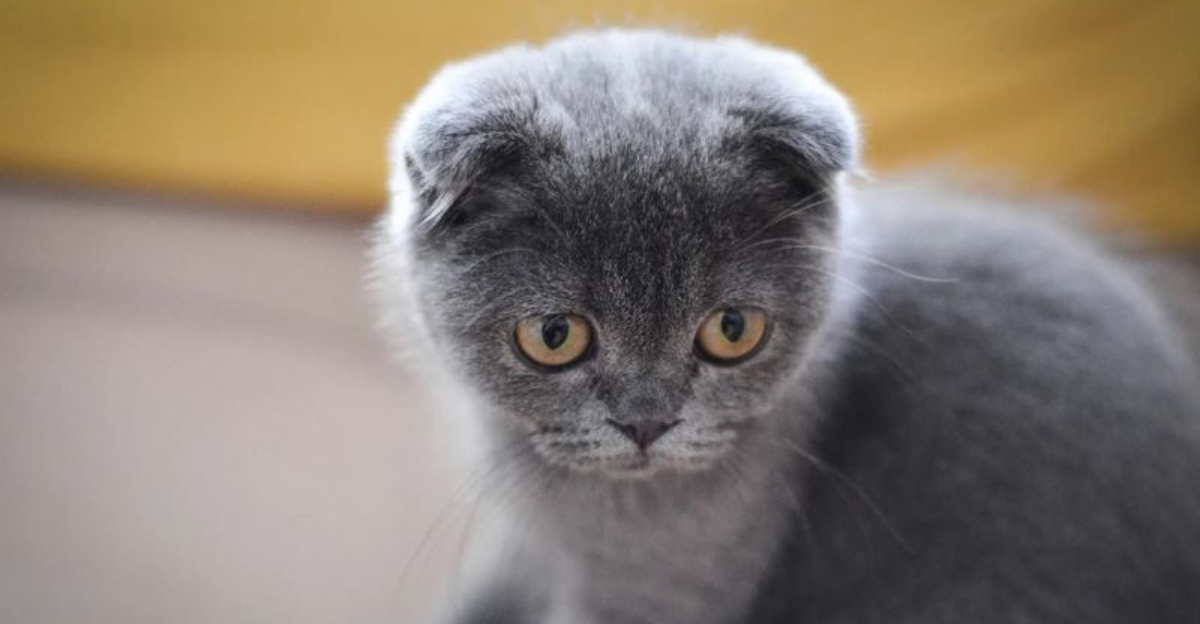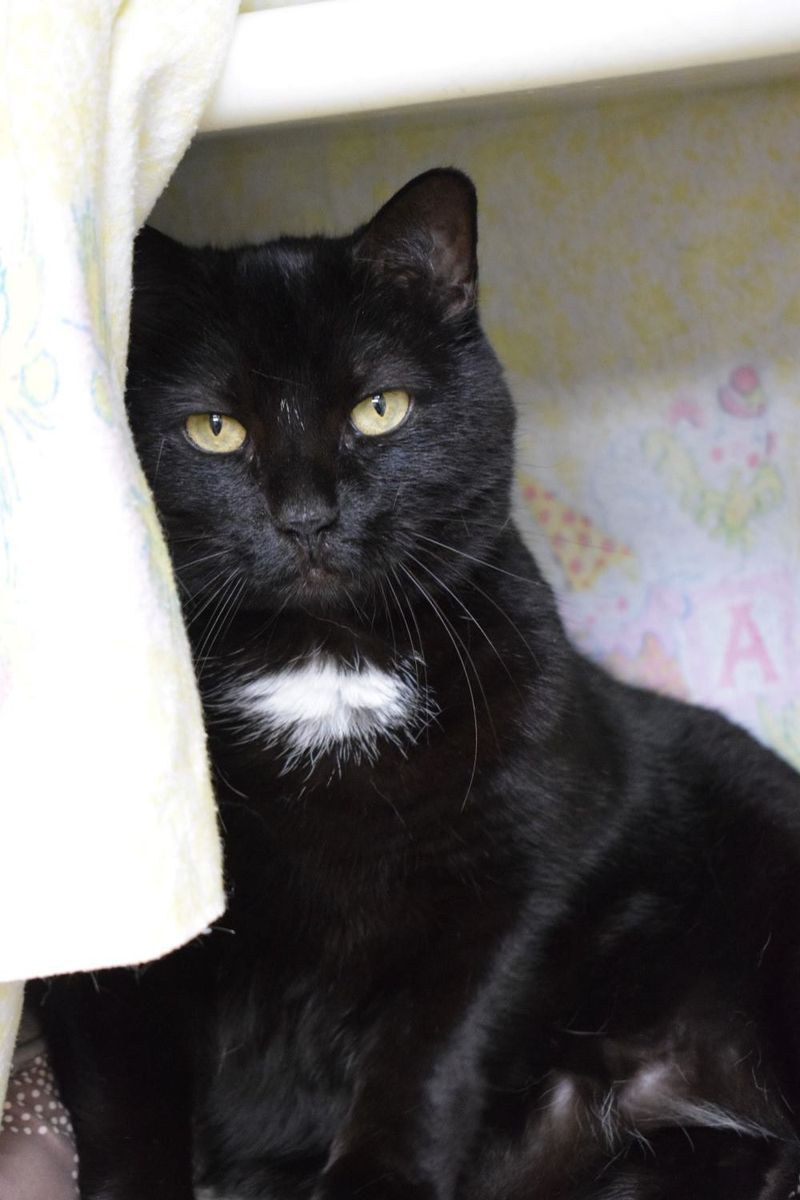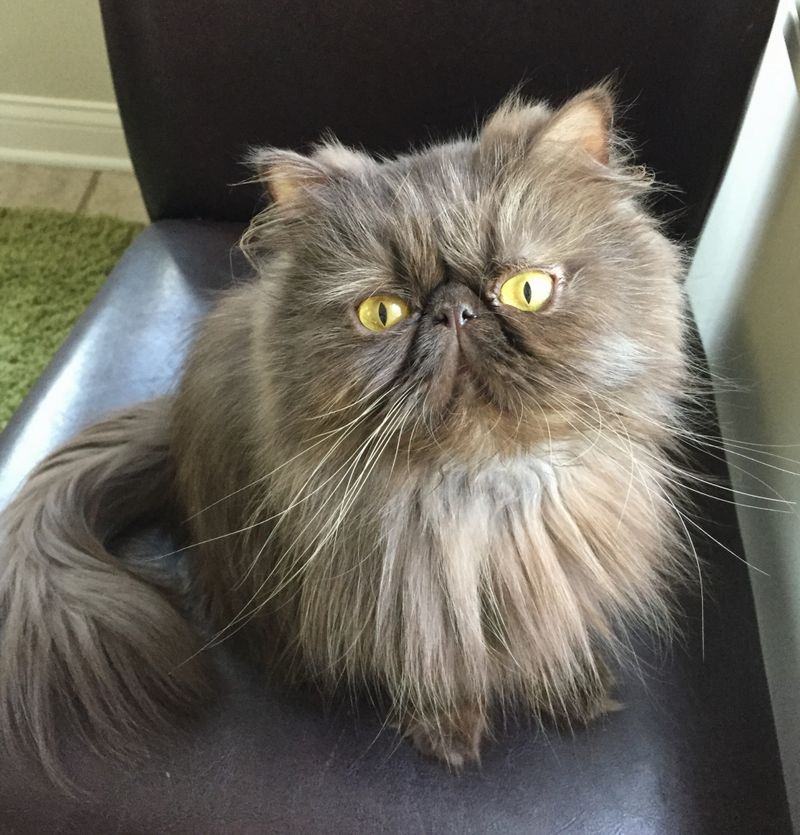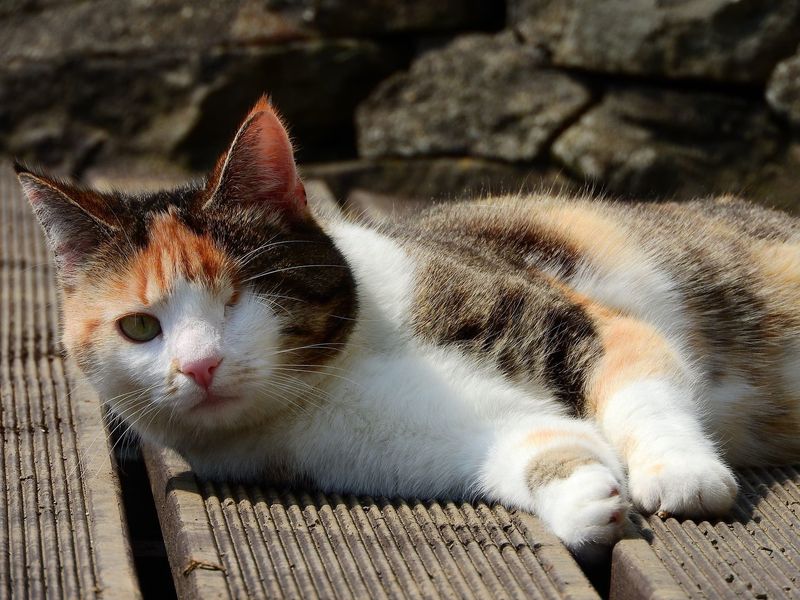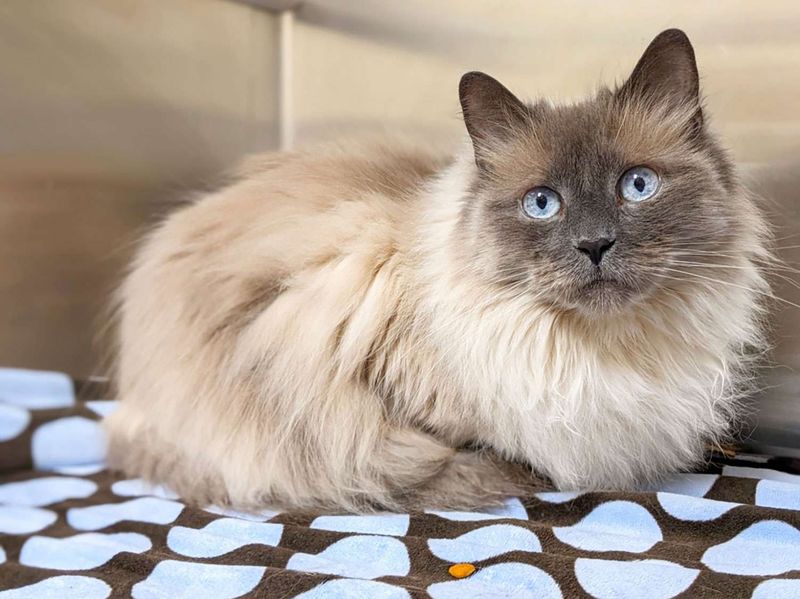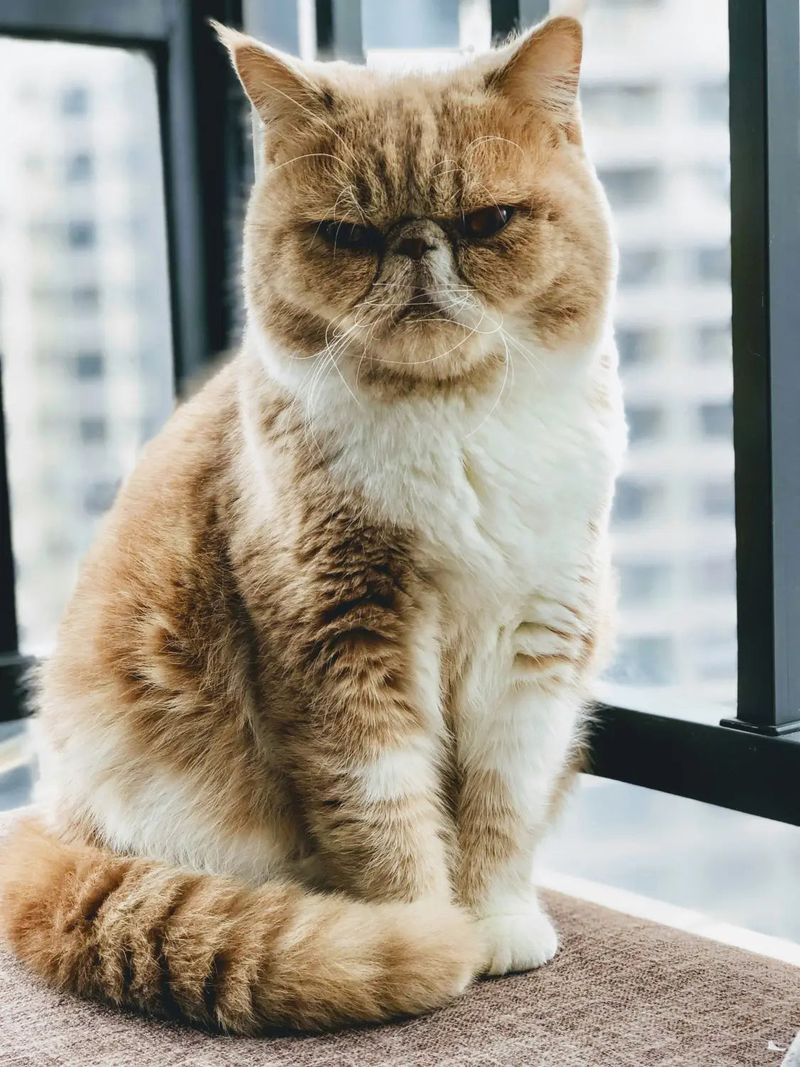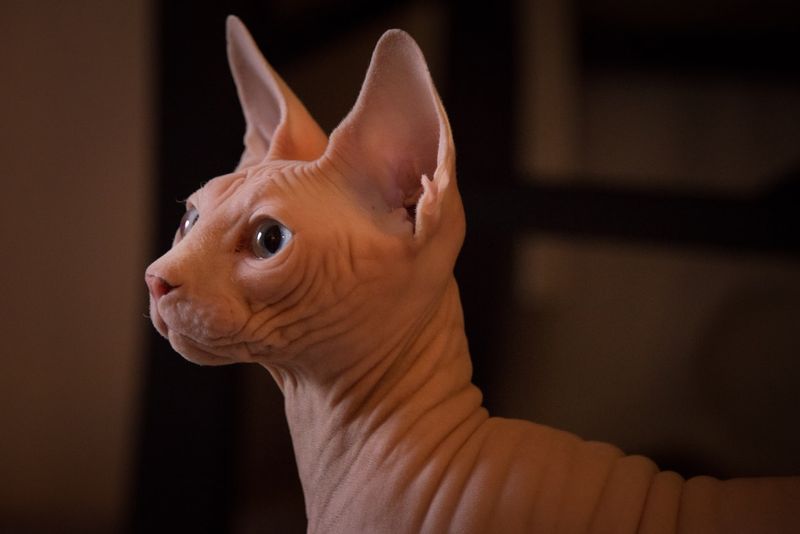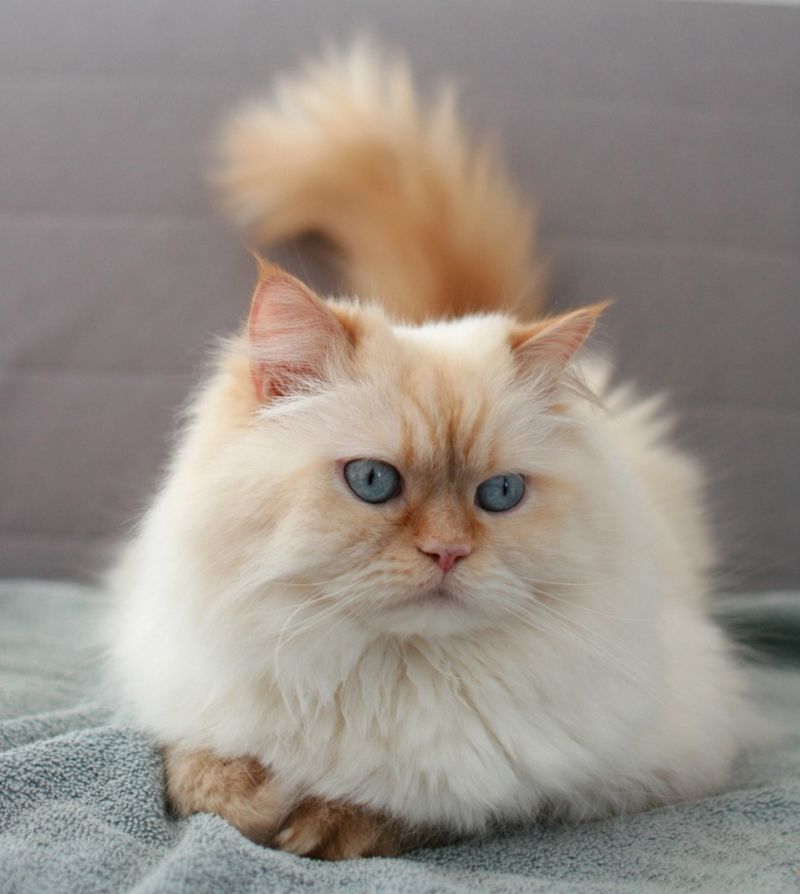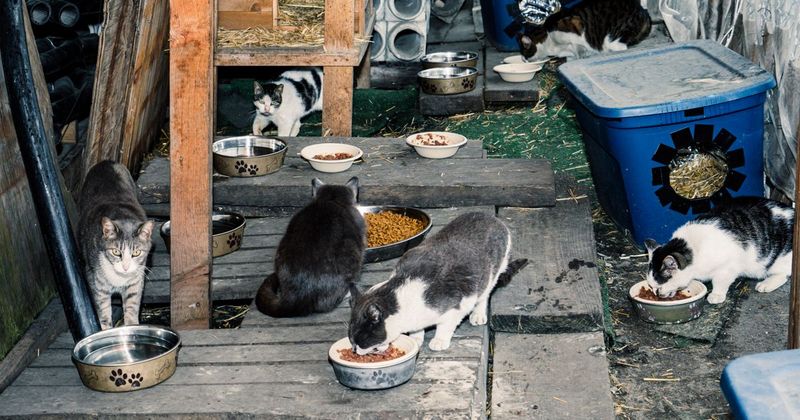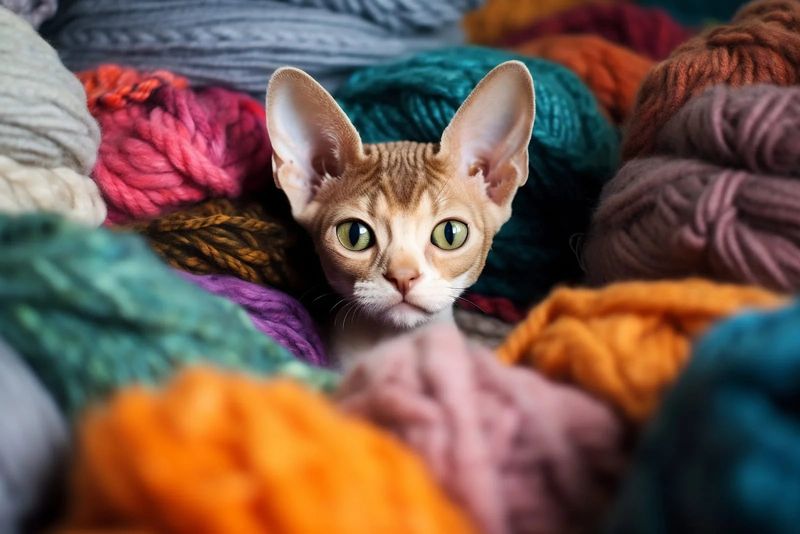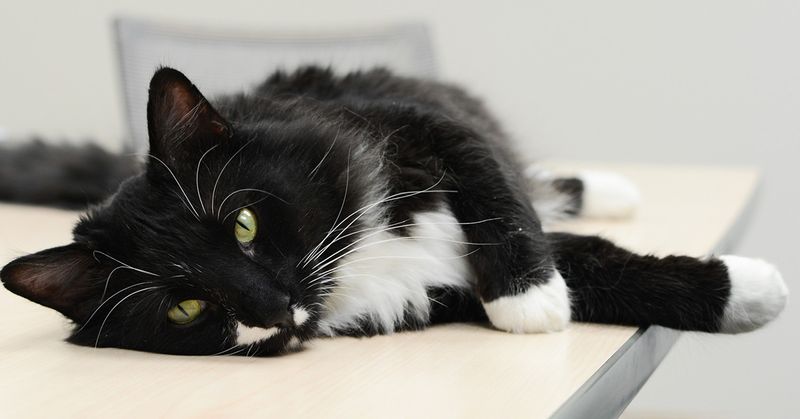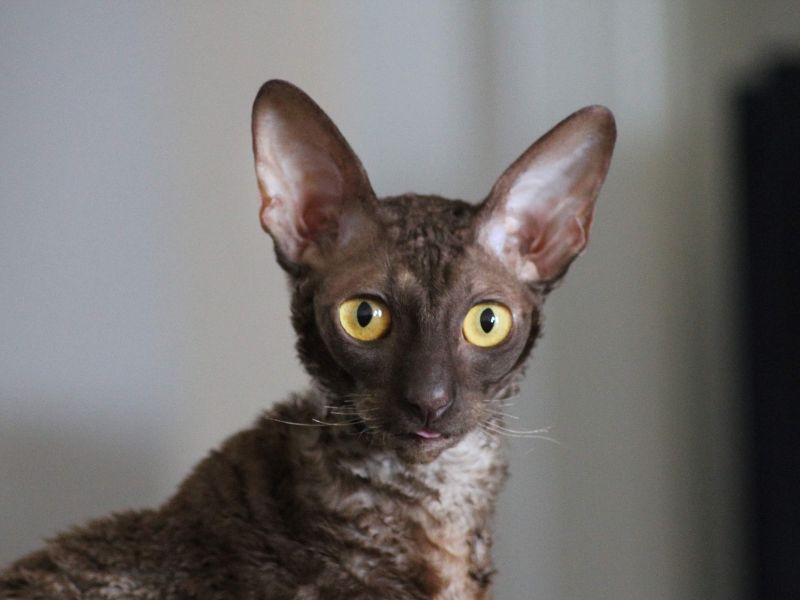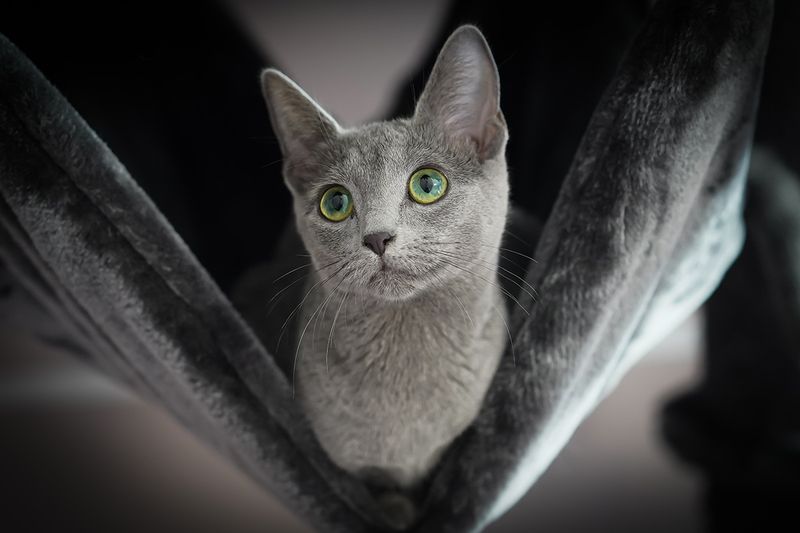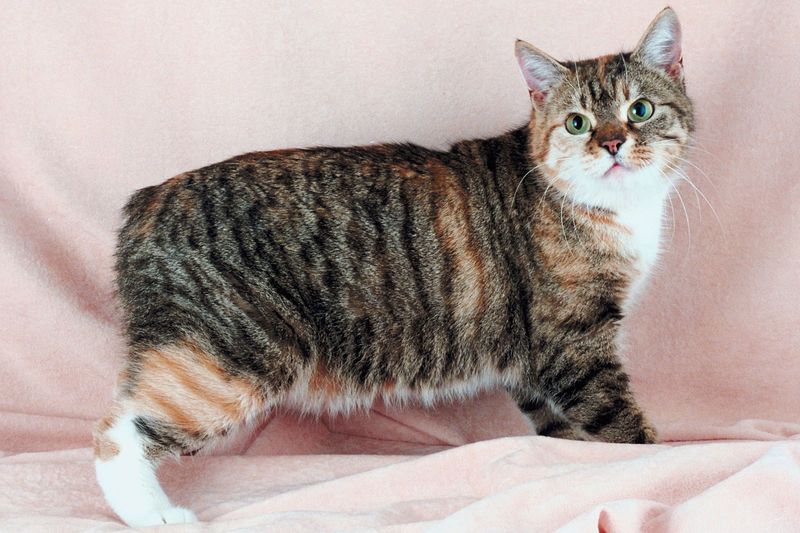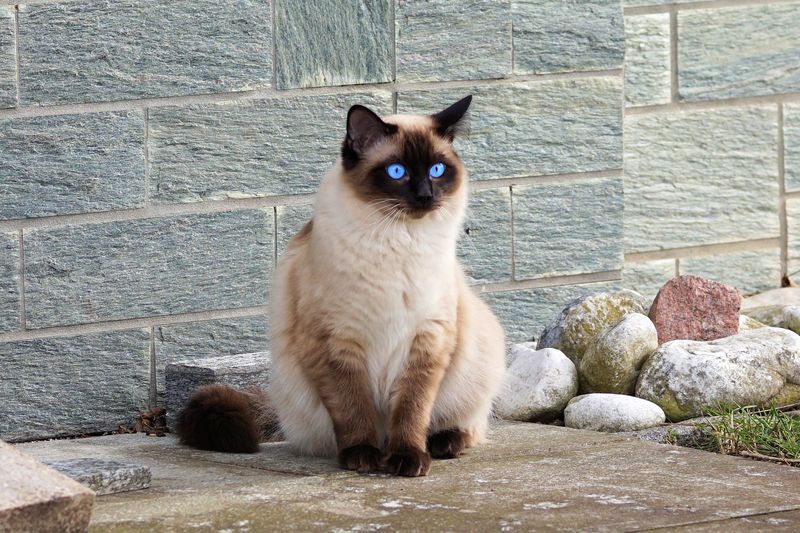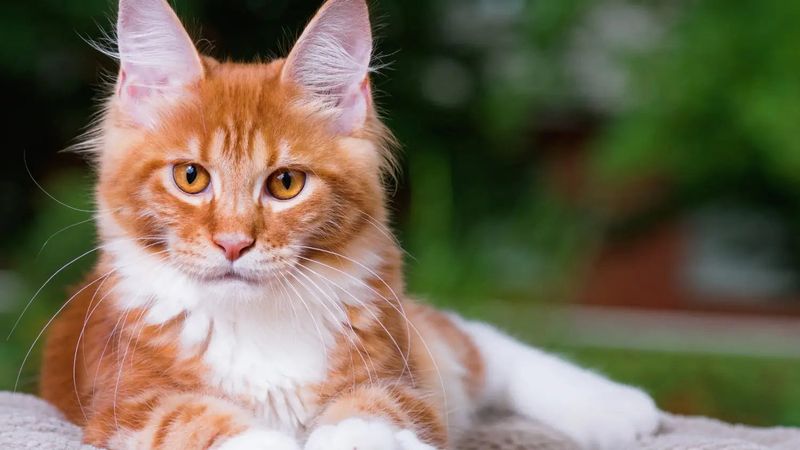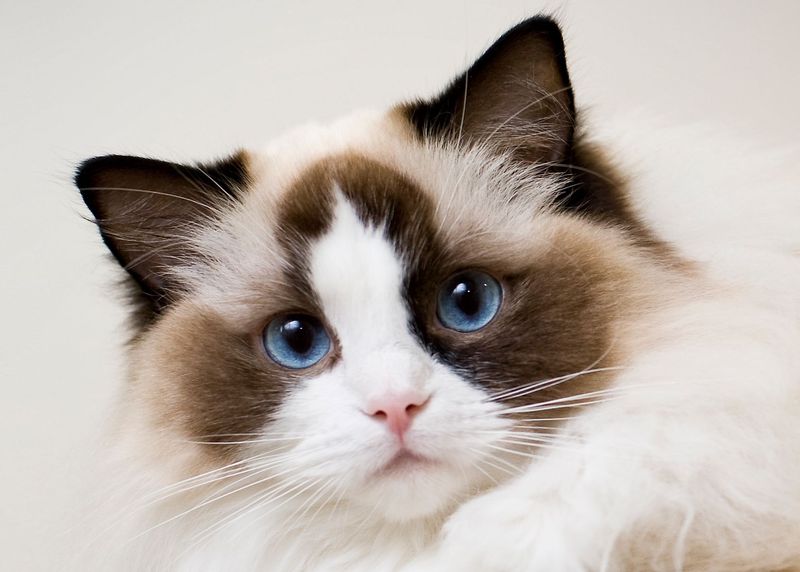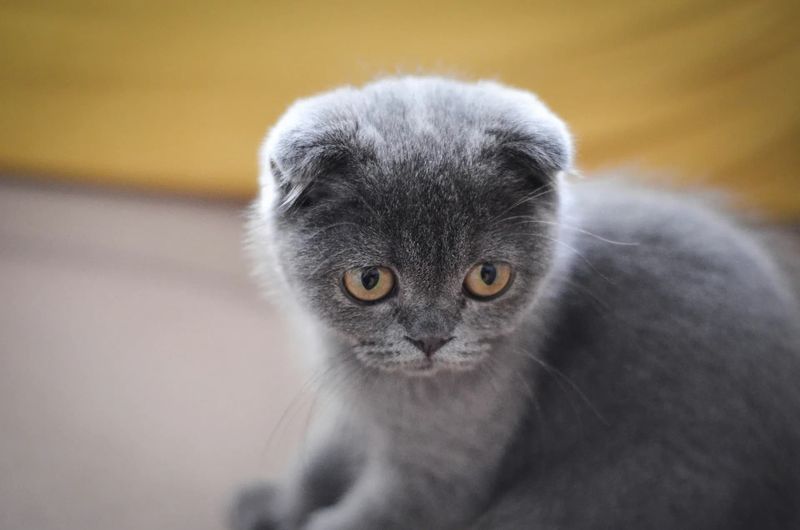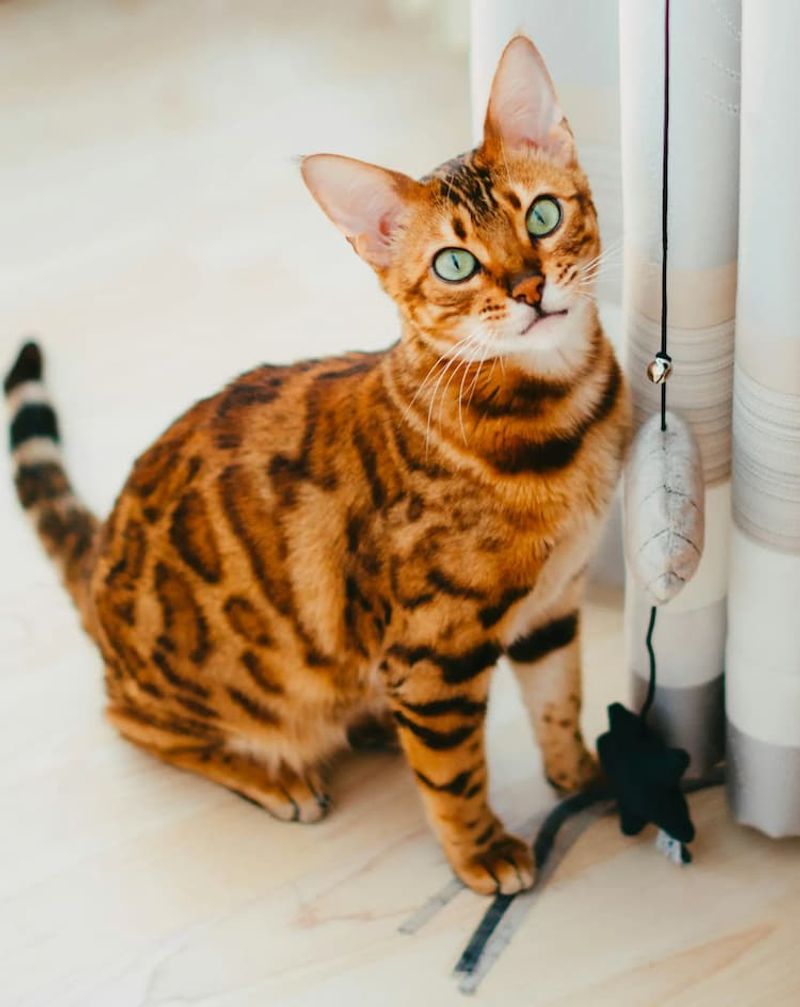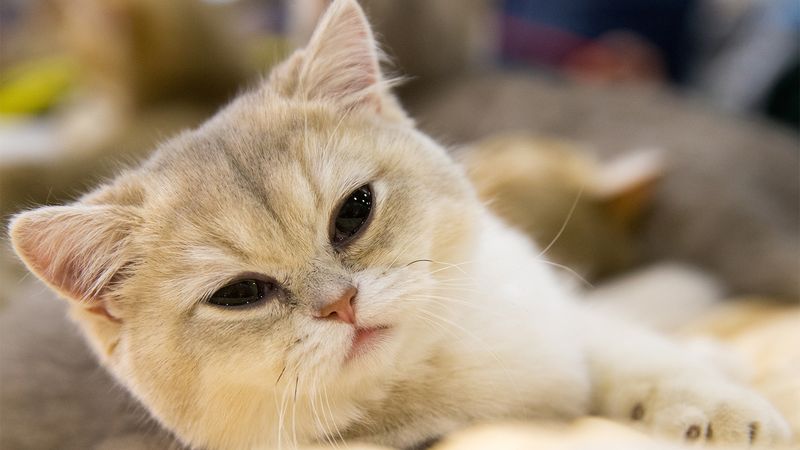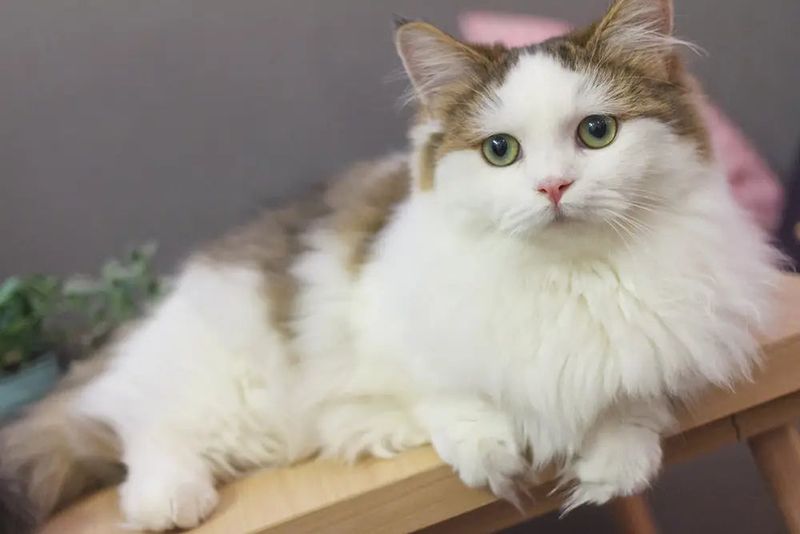📖 Table of Content:
- 1. Black Cats
- 2. Persian
- 3. Special Needs Cats
- 4. Senior Cats
- 5. Exotic Shorthair
- 6. Sphynx
- 7. Himalayan
- 8. Feral or Semi-Feral Cats
- 9. Devon Rex
- 10. FIV-Positive Cats
- 11. Cornish Rex
- 12. Russian Blue
- 13. Manx
- 14. Siamese
- 15. Maine Coon
- 1. Ragdoll
- 2. Scottish Fold
- 3. Bengal
- 4. British Shorthair
- 5. Munchkin
Not all cats have the same chance of finding a forever home. Some breeds are adopted quickly, while others can wait for months or even years. This uneven adoption rate reflects differences in popularity, appearance, and personality traits.
Certain cat breeds tend to be overlooked, spending long periods in shelters without many visitors. Meanwhile, a handful of breeds consistently attract attention and find loving families in no time. These patterns influence how shelters and adopters approach the search for the perfect feline companion.
Knowing which cats are less likely to be adopted and which ones are in high demand can guide prospective pet owners in their choices. Awareness of these trends helps create better opportunities for all cats to find loving homes. Exploring both groups reveals important insights into the world of cat adoption.
1. Black Cats
Superstition continues to plague these beautiful felines. Despite being just as loving and playful as cats of other colors, black cats wait in shelters 20% longer than their differently colored counterparts.
Many adopters pass them by due to old myths about bad luck or simply because they don’t photograph well for social media. This discrimination is called “Black Cat Syndrome” by shelter workers.
Black cats actually bring good luck in many cultures, including Japanese and British traditions. Their sleek coats require less grooming than many other cats, and they often have particularly affectionate personalities that make them wonderful companions.
2. Persian
Maintenance requirements keep many potential owners away from these flat-faced beauties. Their long, luxurious coats demand daily brushing to prevent painful mats and tangles, a commitment many adopters aren’t prepared to make.
Health concerns also impact their adoptability. Persians often suffer from breathing difficulties, eye problems, and kidney disease due to their distinctive facial structure. These medical issues can mean significant veterinary expenses.
Senior Persians face even tougher odds, combining age discrimination with breed-specific challenges. Though they offer gentle companionship and quiet affection, their specialized care needs mean they often wait months longer than other breeds for adoption.
3. Special Needs Cats
Cats with disabilities or chronic health conditions face significant adoption hurdles. Whether blind, deaf, missing limbs, or requiring medication, these felines often get overlooked despite having normal lifespans and quality of life.
Potential adopters worry about veterinary costs and extra care requirements. Many feel unprepared for the perceived challenges, though most special needs cats adapt remarkably well and develop compensatory skills.
Organizations dedicated to special needs cats report that these animals often show extraordinary resilience and gratitude. Their adopters frequently describe the experience as unexpectedly rewarding and straightforward, with the cats teaching powerful lessons about adaptation and joy despite challenges.
4. Senior Cats
Age discrimination affects cats over 7 years old severely. These mature felines often wait 4 times longer for adoption than kittens, despite offering many advantages as companions.
Potential adopters worry about medical costs and limited time together. However, senior cats typically have established personalities, require less training, and provide calmer companionship than energetic kittens.
Many senior cats end up in shelters through no fault of their own—their owners moved, passed away, or could no longer care for them. Senior cat adoption programs often include medical support and reduced fees to encourage these heartwarming matches, giving these deserving cats a chance to live out their golden years in comfort.
5. Exotic Shorthair
Health concerns plague this Persian cousin with its characteristic flat face. Breathing difficulties, eye problems, and dental issues make potential adopters hesitant to take on what they perceive as medical expenses waiting to happen.
Their unique appearance doesn’t always translate well in shelter environments. Without proper grooming and care, these cats can look disheveled rather than showcasing their teddy-bear charm that devoted fans adore.
Exotic Shorthairs require specialized knowledge about brachycephalic (flat-faced) breed care. Many shelters lack the resources to properly market these cats’ positive qualities—their calm, affectionate nature and moderate exercise needs make them excellent apartment companions once their specific health needs are understood.
6. Sphynx
Hairless cats challenge conventional ideas of feline beauty. Their wrinkled skin and prominent ears create a distinctive appearance that some find off-putting, leading to longer shelter stays.
Maintenance surprises many potential adopters. Despite lacking fur, Sphynx cats require regular bathing to remove body oils that would normally be absorbed by fur. Their exposed skin also means they need protection from sunburn and cold temperatures.
Energy bills increase with Sphynx ownership since these cats need warm environments year-round. Their high metabolism requires more food than similarly-sized cats. While devoted Sphynx owners treasure their affectionate, dog-like personalities, these practical considerations make them a challenging adoption choice for many families.
7. Himalayan
Grooming demands discourage many potential Himalayan adopters. Their silky, long coats require daily brushing and regular professional grooming to prevent painful matting—a time commitment many aren’t prepared to make.
Health concerns further complicate their adoption prospects. Like their Persian ancestors, Himalayans often suffer from respiratory issues, eye problems, and kidney disease due to their facial structure. These potential medical expenses make some adopters hesitant.
Shelter environments rarely showcase Himalayans at their best. Without proper grooming, their stunning blue eyes and color-point markings get lost beneath tangled fur. Though they offer gentle companionship and quiet loyalty, their specialized care requirements mean they often wait significantly longer for homes than lower-maintenance breeds.
8. Feral or Semi-Feral Cats
Limited human socialization creates significant adoption barriers for feral cats. These animals often show fear, hiding behaviors, or defensive reactions when approached, making them challenging companions for traditional homes.
Patience requirements exceed what most adopters can provide. Rehabilitating a feral cat can take months or even years of consistent, gentle interaction, with no guarantee of complete socialization.
Shelters struggle to find appropriate placements for these cats. While some feral cats can transition to indoor life with extremely patient owners, many do better in working cat programs where they live in barns, warehouses, or other structures as mousers. These programs provide care while respecting the cats’ need for distance, but such placements are limited.
9. Devon Rex
Unusual appearance creates adoption challenges for these curly-coated cats. Their large ears, slender bodies, and wavy, sometimes patchy fur can seem strange to adopters accustomed to traditional feline looks.
Health concerns further complicate matters. Devon Rex cats can suffer from hypertrophic cardiomyopathy (heart disease) and hereditary myopathy (muscle weakness). These potential medical issues make some potential adopters hesitant.
Rarity works against them in shelter environments. Many potential cat parents have never encountered the breed before and don’t know about their playful, social personalities. Without breed-specific knowledge, adopters often pass by these quirky cats for more familiar-looking options, despite the Devon Rex’s reputation for being affectionate, intelligent companions.
10. FIV-Positive Cats
Misunderstandings about Feline Immunodeficiency Virus create significant adoption barriers. Many potential adopters mistakenly believe FIV is highly contagious or immediately life-threatening, neither of which is true.
FIV-positive cats can live normal lifespans with proper care. The virus weakens the immune system gradually, but with good nutrition, indoor living, and regular veterinary care, these cats often remain healthy for many years.
Transmission requires deep bite wounds, not casual contact. FIV-positive cats can safely live with other non-aggressive cats with minimal risk. Despite these facts, the stigma persists, leaving many friendly, loving FIV-positive cats waiting months or years longer for adoption than their FIV-negative counterparts.
11. Cornish Rex
Unconventional appearance creates adoption challenges for these wave-coated felines. Their curly fur, large ears, and slender build can seem alien to adopters accustomed to traditional cat looks.
Temperature sensitivity surprises potential owners. Cornish Rex cats have only down fur (lacking guard hairs), making them vulnerable to cold and requiring warm environments. Their thin coats also offer less protection from scratches and environmental hazards.
High energy levels exceed what many adopters expect from a cat. Cornish Rex cats remain playful and kitten-like well into adulthood, requiring significant interactive play and environmental enrichment. While devoted fans treasure their active, affectionate nature, their distinctive needs and appearance mean they often wait longer for the right match.
12. Russian Blue
Shy temperaments create adoption challenges for Russian Blues. Their reserved nature means they rarely show well in noisy shelter environments, often hiding during potential adopter visits.
First impressions mislead many potential owners. What appears as aloofness in the shelter transforms into devoted affection once these cats feel secure in a permanent home—a transition that requires patience that many adopters lack.
Subtle beauty works against them in competitive adoption environments. Their plush blue-gray coats and emerald eyes are stunning but understated compared to flashier breeds. While Russian Blues make loyal, intelligent companions who form deep bonds with their families, their initial reserve means they’re frequently overlooked for more immediately outgoing cats.
13. Manx
Taillessness creates both curiosity and concern among potential adopters. While some find the Manx’s rounded appearance charming, others worry about health problems associated with the spinal mutation that causes their distinctive look.
Health concerns prove legitimate in some cases. Manx Syndrome can cause spina bifida, bowel and bladder control issues, and mobility problems in severely affected cats. These potential medical expenses make some adopters hesitant.
Misconceptions about temperament further complicate matters. Some believe the tailless cats cannot communicate properly or will be behaviorally challenged. In reality, healthy Manx cats adapt perfectly well without tails, using other body language to communicate. Despite their playful, affectionate nature, these concerns mean they often wait longer for homes.
14. Siamese
Vocal nature makes Siamese cats challenging for some households. Their legendary “conversations” charm some adopters while deterring others who prefer quieter companions. This distinctive trait means they often wait longer for the right match.
Intelligence requires engagement that exceeds what many expect from a cat. Siamese become bored and destructive without adequate mental stimulation, puzzles, and interactive play. Their problem-solving abilities mean they can open doors, cabinets, and even refrigerators!
Strong personalities surprise unprepared adopters. Siamese form intense bonds with their people and can become jealous, demanding, and clingy. While devoted fans treasure their dog-like loyalty and engagement, these traits make them poor fits for families seeking more independent, low-maintenance pets.
15. Maine Coon
Size concerns deter potential Maine Coon adopters. These gentle giants typically weigh 12-18 pounds, with some males reaching 25+ pounds. Their large frames require more space, bigger litter boxes, and increased food costs.
Grooming demands further limit their appeal. Their shaggy, water-resistant coats require regular brushing to prevent mats, especially around the neck and hindquarters. This maintenance commitment exceeds what many adopters expect.
Health issues specific to large cats create hesitation. Maine Coons have higher rates of hip dysplasia and hypertrophic cardiomyopathy (heart disease). Despite their friendly, dog-like personalities and family-friendly nature, these practical considerations mean Maine Coons often wait longer for adoption than smaller, lower-maintenance breeds.
1. Ragdoll
Popularity works in Ragdolls’ favor at adoption time. Their striking blue eyes, semi-long silky fur, and color-point markings create immediate visual appeal that draws potential adopters to their cages first.
Famously gentle temperaments seal the deal for many families. Ragdolls earned their name from their tendency to relax completely when held, making them excellent companions for careful children and seniors alike. Their low-key, affectionate nature fits well with most household dynamics.
Social media presence boosts their adoption rates. Ragdolls photograph beautifully and their docile nature makes them perfect Instagram stars. This visibility creates high demand, with some shelters maintaining waiting lists specifically for this breed. When Ragdolls appear in shelters, they rarely stay long.
2. Scottish Fold
Distinctive folded ears create immediate appeal for these round-faced felines. Their owl-like appearance draws potential adopters to their cages first, giving them an advantage in busy shelter environments.
Gentle, adaptable personalities strengthen their adoption prospects. Scottish Folds typically adjust well to new environments, other pets, and children. Their moderate activity level suits a wide range of households, from apartments to larger homes.
Celebrity endorsements boost their popularity significantly. Taylor Swift’s famous Scottish Folds, Meredith Grey and Olivia Benson, have created widespread awareness and desire for the breed. Despite concerns about the cartilage mutation that causes their folded ears, these cats rarely spend long periods in shelters or rescues before finding homes.
3. Bengal
Exotic appearance gives Bengals a significant adoption advantage. Their wild-looking spotted or marbled coats, muscular bodies, and confident posture create immediate visual appeal that draws potential adopters.
Activity level matches modern pet parent expectations. Today’s adopters often seek engaged, interactive cats rather than traditional aloof felines. Bengals’ playful, athletic nature and trainability (many learn tricks and walk on leashes) fulfill these desires perfectly.
Social media presence fuels their popularity. Bengals’ striking looks and entertaining antics make them Instagram and TikTok favorites. Videos of Bengals playing in water, performing tricks, or showing off their remarkable jumping abilities create high demand. Despite their need for extensive enrichment and stimulation, these mini-leopards rarely spend long in shelters.
4. British Shorthair
Teddy bear appearance creates immediate appeal for British Shorthairs. Their round faces, plush coats, and stocky bodies give them a cuddly, stuffed-animal quality that attracts potential adopters, particularly in the popular blue (gray) variety.
Low-maintenance requirements increase their adoption advantage. Their short, dense fur needs minimal grooming, and their moderate activity level suits a wide range of households. British Shorthairs rarely develop problematic behaviors like excessive vocalization or destructiveness.
Famous representation boosts recognition and desire. The Cheshire Cat from Alice in Wonderland was modeled after this breed, as was the original “I Can Has Cheezburger?” meme cat. This cultural visibility, combined with their easygoing nature and adorable appearance, means British Shorthairs typically find homes quickly.
5. Munchkin
Short legs create both controversy and appeal for Munchkins. While some potential adopters have ethical concerns about the breed’s genetic mutation, others find their kitten-like proportions irresistibly cute—an advantage in adoption settings.
Social media fame drives their popularity enormously. Videos of Munchkins running, playing, and sitting up like prairie dogs regularly go viral, creating high demand. Their distinctive appearance makes them instantly recognizable even to casual cat enthusiasts.
Personality exceeds expectations for many adopters. Despite their short legs, Munchkins remain active, playful, and capable of jumping (though not as high as standard cats). Their sociable, outgoing nature fits well with family life. When Munchkins appear in shelters or rescues, waiting lists often form immediately.
